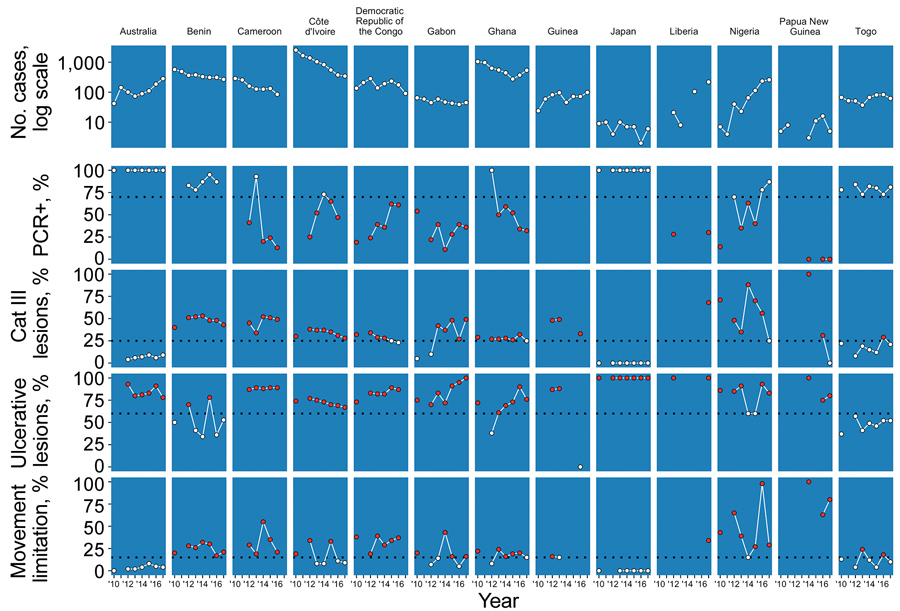Volume 25, Number 12—December 2019
Synopsis
Global Epidemiology of Buruli Ulcer, 2010–2017, and Analysis of 2014 WHO Programmatic Targets
Figure 4

Figure 4. Depiction of progress toward World Health Organization programmatic targets for Buruli ulcer–endemic countries that reported continuous data. Black dotted lines indicate 2014 targets. White dots indicate that the country met the target; red dots indicate that it did not. Cat, category; +, positive.
Page created: November 18, 2019
Page updated: November 18, 2019
Page reviewed: November 18, 2019
The conclusions, findings, and opinions expressed by authors contributing to this journal do not necessarily reflect the official position of the U.S. Department of Health and Human Services, the Public Health Service, the Centers for Disease Control and Prevention, or the authors' affiliated institutions. Use of trade names is for identification only and does not imply endorsement by any of the groups named above.